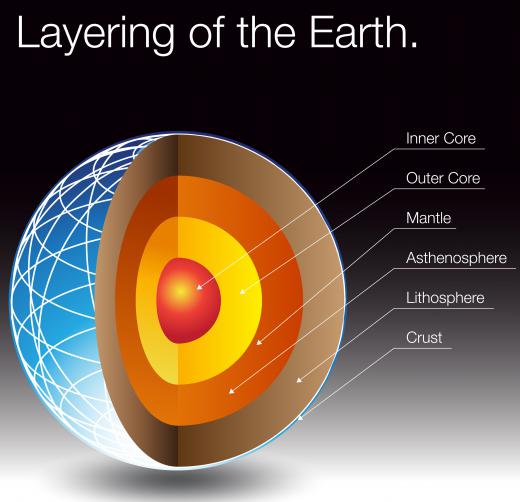What are Mantle Plumes?
 Michael Anissimov
Michael Anissimov
Mantle plumes are powerful geological events that consist of a large bulb of magma from the mantle, hundreds of miles across, rising into the upper crust and triggering major volcanism. Visually, they would look similar to the rising shapes in a lava lamp. They may last for more than a million years, producing a phenomenon called a hotspot. Mantle plumes are believed to be a primary mechanism for cooling the Earth's core, which is a superheated ball of solid iron and nickel. The plumes are also a method of cooling the mantle, but it is believed to be a distant second to heat loss at the boundaries of tectonic plates.
Evidence for mantle plumes comes in the form of geophysical models of the Earth's interior, as well as persistent hotspots which stay stationary with respect to the rest of the mantle, but move with respect to the crust as the tectonic plates slowly drift over millions of years. This drifting effect is responsible for the Hawaiian-Emperor seamount chain, which provided crucial evidence for mantle plumes by showing cyclical periods of intensity in eruptions in the geologic history of the hotspot. The mantle plume that produced the Hawaiian islands is one of the best known in the world, for its central location in the Pacific Ocean as well as the prodigious amount of volcanic material it has produced. If measured from the ocean floor, Hawaii's big island is about 50% larger than Mt. Everest.

Mantle plumes are believed to be the cause of large igneous provinces. A large igneous province is a field of magmatic rock, a few million km2 in extent, with volumes on the order of 1 million km3, created over a geologically short period of time, less than a million years. These may be formed from the slow, continuous eruption of lava or the rather abrupt release of lava in a so-called supervolcano event. 2.2 million years ago, a supervolcano in what is now Yellowstone Park ejected 2,500 km3 of lava in a sudden eruption, blanketing North America in ash and covering the Earth in a volcanic winter that may have initiated runaway global cooling.
AS FEATURED ON:
AS FEATURED ON:














Discuss this Article
Post your comments